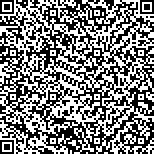下载中心
优秀审稿专家
优秀论文
相关链接
摘要

全球范围内的城市扩张已使得大量的不透水面取代了以植被为主的地表自然景观,并给生态环境带来了明显的负面影响。不透水面作为一个影响生态环境的关键因子已引起了全社会的广泛关注。如何及时快速地掌握不透水面的空间分布信息,准确无误地量化不透水面的动态变化信息,是城市规划、环境保护亟待解决的现实问题。而遥感以其快速、大范围、多尺度、可重复的对地观测优势为解决这一问题提供了很好的解决方案。不透水面遥感研究经过近十几年的发展已有了长足的进步,多种针对不透水面信息反演的遥感创新技术与方法被相继提出。本文重点分析了这些针对遥感不透水面提出的创新技术,详细地指出了它们的优势和不足,并在此基础上总结了中国遥感工作者在不透水面遥感方面的研究工作。当前许多不透水面信息的反演精度都可以达到85%以上,但是不透水面与裸土和阴影信息的混淆仍是困扰不透水面信息精准反演的主要问题。由于大部分不透水面材料具有和砂土石同源的特点,因此在现有影像光谱分辨率不足的情况下,单靠光谱是很难进一步提高不透水面信息的反演精度,而借助LiDAR等其他辅助数据,将有望帮助解决这一瓶颈问题。
Worldwide land use change and urban spatial expansion have replaced the vegetation-dominated natural landscape with various impervious surfaces. This replacement has brought about significant negative impacts on the global ecological environment and has raised public awareness of the emergence of this key ecological environment indicator. Impervious surfaces have become an important consideration in many environmental-or socioeconomic-related studies. Quickly gathering information regarding the magnitude, location, geometry, and spatial pattern of impervious surfaces and accurately quantifying the dynamic information on impervious surfaces have become urgent issues to be addressed. Today's remote sensing technology can provide a promising solution to this problem owing to its rapid, repetitive, synoptic, and multi-scale Earth observation. The remote sensing of impervious surfaces has made considerable progress after its development in 2000, and various innovative techniques for the retrieval of impervious surface information have been proposed in the last decade. Therefore, we examined these innovative approaches and focused on their advantages and disadvantages through a literature review. Chinese research and achievements regarding the remote sensing of impervious surfaces were also summarized. The current remote sensing of impervious surfaces has made great progress, and many of the techniques for the information extraction and classification of impervious surfaces achieve an accuracy of over 85%. Nevertheless, the mapping of impervious surfaces remains a challenge. The main problem is the confusion between impervious surface information and bare soil/shadow information, which affects the accurate retrieval of impervious surface information. Most impervious surface materials are made of or directly from rock, sand, or clayish soil. Thus, impervious surfaces exhibit similar spectral characteristics. Existing multispectral remote sensors lack sufficient spectral resolution to distinguish impervious surface materials from bare soil. Thus, using the techniques on the basis of spectral characteristics alone hampers the improvement of the accuracy of impervious surface inversion. Other secondary data, such as LiDAR data, are expected to help solve this bottleneck in future research on the remote sensing-based retrieval of impervious surfaces.

